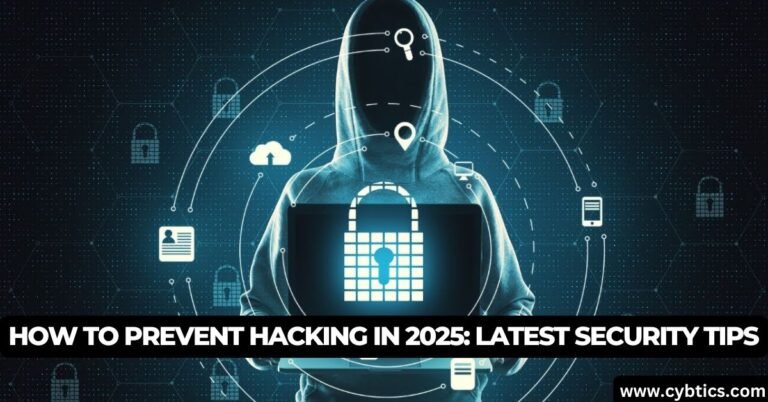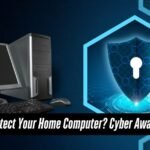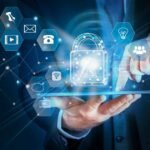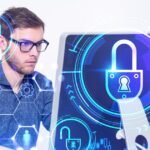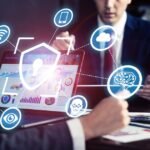Imagine your home computer as a diary full of secrets you’d never share. Now picture someone stealing it, page by page. That’s what cybercriminals do every day. Cybersecurity isn’t just a buzzword; it’s your guard dog. Here’s why it’s a must-have!
Hackers target your private stuff—think passwords, photos, or even your tax files. With AI-powered attacks surging in 2025, one wrong move can expose you. Smart devices at home? They’re entry points too. Cybersecurity locks the door on chaos!
importance protection of home computers
Your home computer is like a safe holding your most valuable treasures. Photos, passwords, and personal docs sit there, tempting cybercriminals daily. In 2024, over 60% of data breaches hit regular folks, not just big companies. Protecting it stops thieves from cashing in on your life!
One weak spot like an outdated app can let malware sneak in fast. Hackers now use AI to craft scams that trick even the savvy in 2025. Unprotected devices can spread trouble to your phone or smart TV too. Good security keeps your whole digital home safe!
Think a breach won’t hit you? Last year, ransomware cost victims millions worldwide. It locks your files, demanding payment or they’re gone forever. With remote work still huge, your computer’s a goldmine for attackers. Locking it down now saves you from a world of pain!
Common threats to home computers

Based on multiple sources, including American National University and Trend Micro, the following table outlines the most prevalent threats to home computers, their definitions, and impacts:
| Threat | Definition | Impact |
| Malware | Malicious software, including viruses, worms, trojans, adware, and spyware. | Can damage systems, steal data, or disrupt operations. |
| Phishing | Deceptive communications (emails, websites) to extract sensitive information. | Leads to identity theft, financial loss, or account compromise. |
| Social Engineering | Psychological manipulation to trick users into compromising security. | Enables unauthorized access or data breaches. |
| Ransomware | Malware that encrypts files and demands payment for decryption. | Locks users out of data, with potential financial and emotional stress. |
| Unsecured Networks | Using public or poorly secured Wi-Fi, exposing data to interception. | Allows eavesdropping, man-in-the-middle attacks, and data theft. |
12 ways to protect your Home computer
Password Management
Your passwords are the keys to your digital life. Use strong, unique passwords for each account, at least 12 characters long, with a mix of letters, numbers, and special characters. Avoid using common words or personal information, as these can be quickly cracked by hackers. Using the same password for multiple accounts is risky; if one is compromised, all others are at risk. Consider using a password manager to generate and store complex passwords securely, and enable two-factor authentication (2FA) for added security.
Software Updates
Keeping your operating system and software up to date is crucial for security. Updates often include patches for known vulnerabilities that hackers can exploit, so enable automatic updates for your operating system. Regularly check for updates for all installed software, such as browsers and office applications, and install them promptly. Be wary of third-party software and only download from trusted sources, verifying the developer’s reputation to avoid malware.
Antivirus Software
Antivirus software is essential for protecting your computer from malware, including viruses, spyware, and ransomware. Choose a reputable provider that offers real-time protection, regular updates, and features like ransomware protection. Perform regular scans to detect and remove threats, and keep the software updated to handle the latest attacks. Be cautious with free antivirus software, as they might have limitations compared to paid versions.
Email and Phishing Awareness
Phishing is a common tactic where attackers impersonate legitimate entities to trick you into revealing sensitive information. With AI, phishing emails are becoming more sophisticated and harder to detect, so be cautious with emails, especially those from unknown senders. Avoid clicking on suspicious links or downloading attachments from untrusted sources, and always verify the sender’s email address. If unsure, contact the supposed sender through a known, official channel to verify authenticity.
Data Backup
Regularly backing up your data is crucial for protecting against threats like hardware failure, accidental deletion, and ransomware attacks. Ransomware, with an 81% rise from 2023 to 2024 (onlinedegrees.sandiego.edu), can lock your files and demand payment, but a recent backup lets you restore without paying. Use an external hard drive or cloud storage for backups, ensure they are secure, and test them periodically to ensure they are complete and functional.
Firewall Configuration
A firewall acts as a barrier between your computer and the internet, blocking unauthorized access and protecting against certain attacks. Enable and configure your computer’s built-in firewall to allow only necessary incoming and outgoing connections. Consider using a hardware firewall for your home network for an extra layer of protection, and regularly review settings to ensure they are appropriate. This is especially important with the rise of smart devices connected to home networks.
Wireless Network Security
With the proliferation of IoT devices, securing your wireless network is crucial to prevent unauthorized access. Secure your Wi-Fi with a strong password and use the latest encryption standard, such as WPA3; if not available, use WPA2 with AES. Hide your network’s SSID to make it less visible to potential attackers, disable remote management, and update your router’s firmware regularly to fix vulnerabilities. Change the default username and password for your router to something strong and unique.
Multi-Factor Authentication
Multi-Factor Authentication (MFA), also known as two-factor authentication (2FA), adds an extra layer of security by requiring more than one form of verification. This could be something you know (like a password), something you have (like a smartphone), or something you are (like a fingerprint). Enable MFA for important accounts to prevent unauthorized access even if your password is compromised, and consider biometric options like fingerprint or facial recognition for added convenience.
Cyber Safety Education
Educating yourself and your family about cyber safety is vital in today’s connected world. Teach everyone about common threats like phishing, the importance of strong passwords, and how to recognize suspicious emails or websites. Stay informed about the latest security practices and updates, and encourage children to practice safe internet usage, including understanding privacy settings and avoiding sharing personal information online.
Secure Web Browsing
When browsing the web, ensure you’re on secure websites, especially for sensitive tasks like online banking. Look for the padlock icon and “https://” in the URL, which indicates encrypted connections, making it harder for attackers to intercept data. Be cautious on public Wi-Fi networks, as they can be less secure; consider using a VPN to encrypt your internet connection. Keep your browser and extensions updated to protect against vulnerabilities, and be aware that AI can create convincing fake websites.
Access Control
Limit access to your computer to trusted individuals to reduce the risk of unauthorized use. Set up separate user accounts with appropriate permissions for different family members, ensuring each has only the access they need. For children, consider setting up parental controls to protect them from inappropriate content and potential scams, and regularly review who has access to ensure security.
Physical Security
Physical security is often overlooked but is crucial for protecting your home computer. Keep your computer in a secure location, away from easy access by strangers, and use a cable lock if necessary, especially in public places like coffee shops. Be cautious with physical media like USB drives, as they can be used to spread malware, and ensure your computer is not left unattended to prevent theft or tampering.
Protect your personal information online

Protecting your personal information online is crucial in today’s digital age. Begin by creating strong, unique passwords for each of your accounts, incorporating a mix of uppercase and lowercase letters, numbers, and symbols. Enable two-factor authentication (2FA) wherever possible to add an extra layer of security, ensuring that even if your password is compromised, unauthorized access is prevented.
Be cautious about the personal details you share on social media platforms. Oversharing can provide malicious actors with information they can exploit. Regularly review and adjust your privacy settings to control who can view your information and posts. Additionally, avoid clicking on suspicious links or downloading attachments from unknown sources, as these can be phishing attempts designed to steal your data.
Automate Cyber awareness training with CyberArrow Awareness Platform
The CyberArrow Awareness Platform is designed to automate and enhance cybersecurity training within organizations. It offers interactive, computer-based courses tailored to various cultural contexts, ensuring comprehensive and engaging learning experiences. The platform supports multiple languages, including Arabic, and emphasizes storytelling and immersive activities to facilitate effective knowledge retention.
Customization is a key feature, allowing seamless integration with existing systems like Active Directory, and enabling organizations to align the platform with their specific requirements. Management benefits from advanced reporting tools that provide detailed insights into individual and departmental progress, with customizable reports available in multiple formats. Additionally, the platform includes a phishing simulation module, enabling realistic attack scenarios to assess and improve employee responses to potential threats.
By automating cybersecurity training, the CyberArrow Awareness Platform helps reduce the risk of cyber incidents stemming from human error, thereby safeguarding valuable assets and ensuring compliance with regulatory standards.
Frequently asked question
Do I need antivirus on my home computer?
Yes, antivirus protects against malware, phishing, and cyber threats. Even with safe browsing habits, real-time protection helps prevent hidden attacks.
How do I physically secure my computer?
Use a cable lock or store it in a locked room when not in use. Enable BIOS/firmware passwords to prevent unauthorized access.
How to check if your home Wi-Fi is secure?
Log into your router settings and verify encryption is WPA3 or WPA2. Check for unknown devices connected and update firmware regularly.
What is the best security option for home Wi-Fi?
WPA3 encryption with a strong, unique password is the safest option. Disable WPS and use a firewall to block unauthorized access.
How to make your home internet more secure?
Change the default router login, use a VPN, and enable automatic firmware updates. Set up a guest network to isolate smart devices from main connections.
Summary
Cybersecurity keeps your personal data, bank details, and passwords safe from hackers. Without protection, malware and scams can steal your identity or lock your files. Strong passwords, antivirus, and secure Wi-Fi prevent cyber attacks. Regular updates and smart browsing reduce risks. Staying alert online keeps your computer and privacy secure.


